Lab
Serial RGB shelves lighting
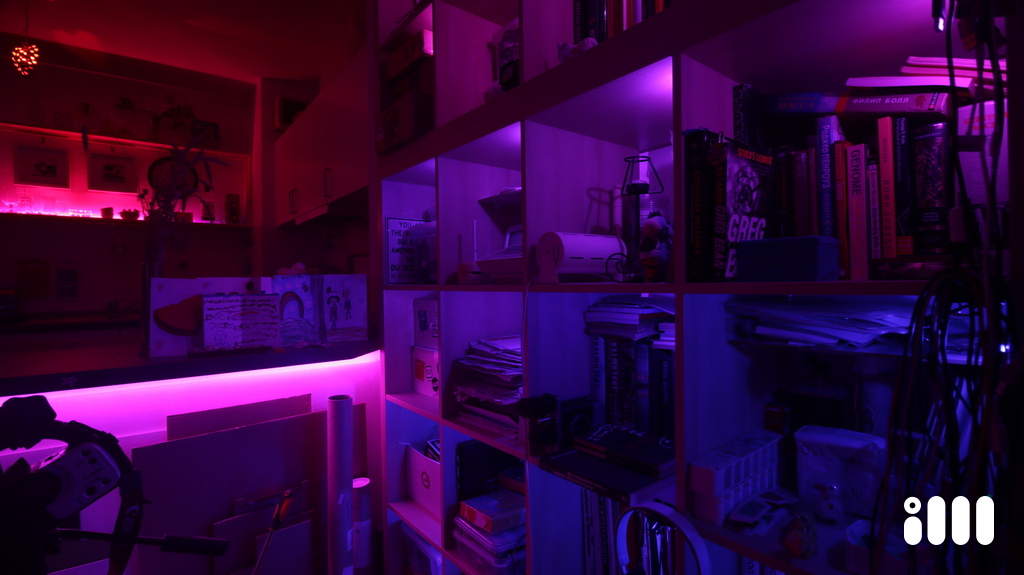
Alas, the size of the shelves does not allow for the construction of a full-fledged Tetris on the entire wall. However, the smooth color change mode as darkness falls plunges the room into a futuristic atmosphere of Blade Runner or Solaris, if you prefer (in Soderbergh’s interpretation :)
[ git ]
Heartlight
How to transform a seemingly insignificant trinket from a souvenir store into an extraordinary kitchen light source. All you need to do is attach a power module, ESP8266 and an RGB LED + add appropriate IM firmware.

Now, it not only captivates the eye but also animates the space with a cohesive ensemble of surrounding interior siblings.
[ git ]
Seem like a great result…
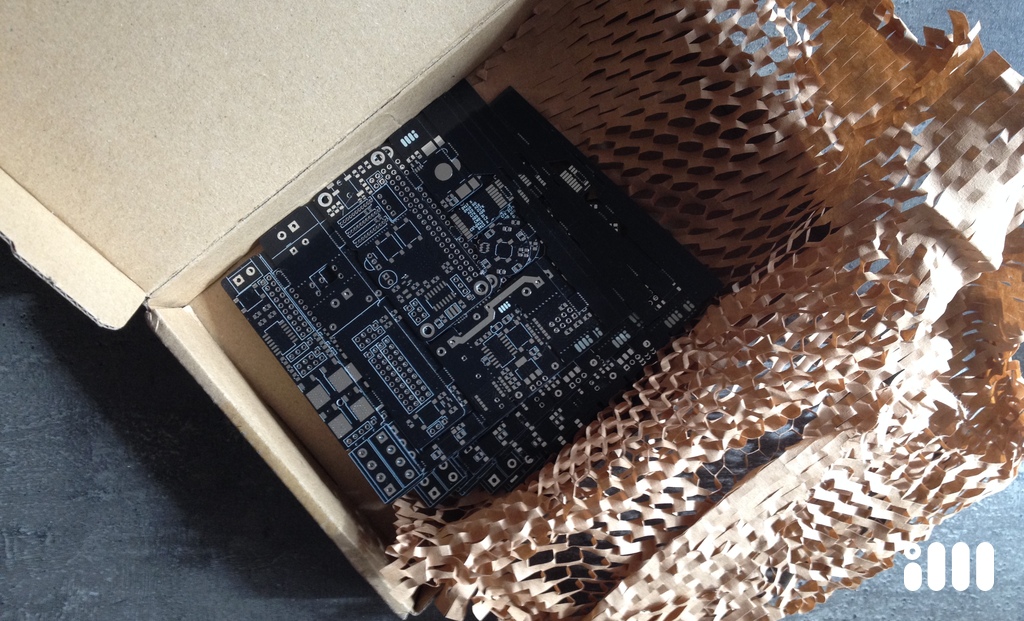
dirtypcb (Dangerous Prototypes) are great guys though. Not only did they remake the defective boards, but also refund it in full + sent the new ones exactly on time for free, exceeding all my expectations.
Thanks for the nice stickers guys! :)
Aine, the magic tree
When I first conceived of IM in the late 2000s, this archetypal design was one of the earliest realizations of interacting interior objects concept. At one point, I even considered naming it Fraser, but eventually, settled on a more poetic version.
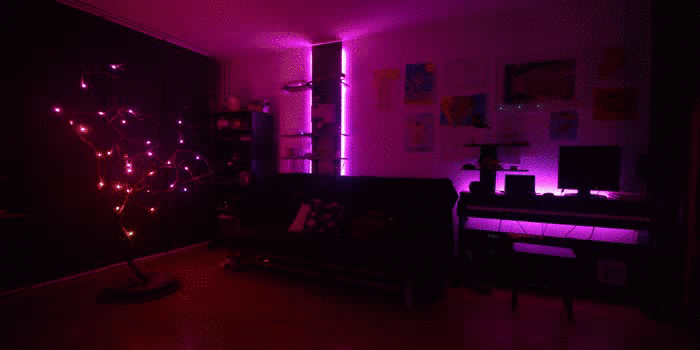
Automatic lighting for the bathroom mirror
Automatic lighting for the bathroom mirror. My initial implementation utilized an ultrasonic sensor, which, however, proved ineffective in environments with high humidity. Subsequently, I transitioned to an infrared (IR) sensor, which, despite its advantages, exhibited issues post-shower. Presently, I am contemplating the integration of a motion sensor with a screen, aiming to limit its functionality to a designated area of the bathroom.
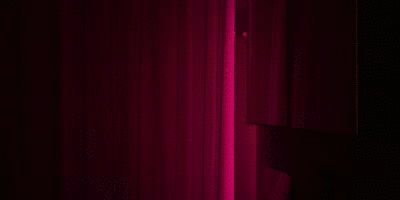
AXOD Shield

This is main accessory for the entire system. Long-term testing and operation have demonstrated that, even when implemented at the kernel module level, The IR sensor and 433 MHz receiver are significantly impact the processor resources on boards like the Raspberry Pi Zero. Additionally, relying solely on reliability of embedded systems can be somewhat presumptuous, as it may eventually hang for unknown reasons as well.
So it became evident that some external module is required. This led to the development of this expansion board.
The board includes an IR transmitter and receiver, an UART interface, 433 MHz receiver, DC-DC decoupler, 3 connectors for audio transmitters (Bluetooth or other), three optical MOSFETs for full decoupling of audio part, and a Video-Audio jack to connect everything to your grandma’s TV :)
The board can be split for 2 parts and easily used in conjunction with another dev-boards.
4 channel SSR switcher

The board is designed for a four-channel switch using solid-state relays. It allows for the assembly of a single relay for triggering the switching of a single device. In this configuration, the entire assembly fits seamlessly into a standard Chinese timer case.
Screenspray
Screenspray is an experimental open prototype of a distributed system that restores the structure of physical positions of its elements on a surface of various topology. Screenspray system can be used not only to form images but also to construct any complex textures and kinetic surfaces.

Aequorea interplay lights
Interactive light sources which are able to change hue and saturation in compliance with color and light environment. The logic of color behavior is a subject of user-specified color model. Device can be used both individually and in combination with Axon microserver.
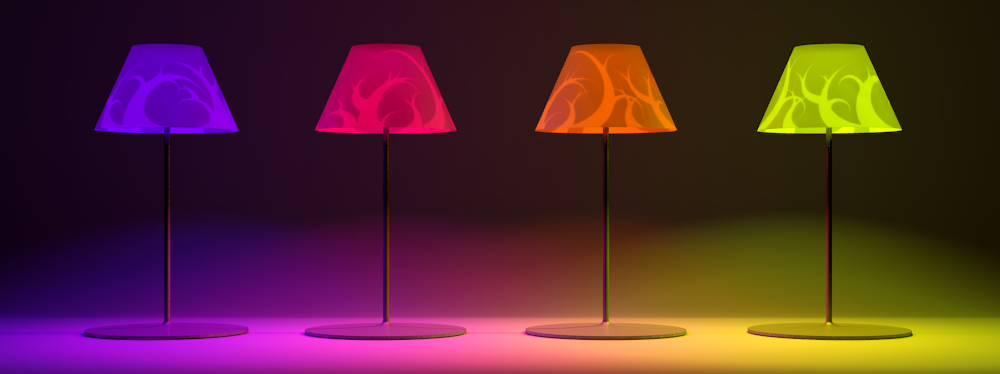
Light sources has two options: built-in rechargeable power source and a wireless resonance module, implying the use of a special stand or pad for remote power supply.
AXOD (aka Digital Axon) microserver
Axod is a Lua based microserver intended to organize the customized local interactive spaces.
The Axod was initially developed for use on embedded devices running an OpenWRT Linux that is proposed as alternative firmware for mass-production network routers. At the moment you can use practically any hardware with any Linux distro in accordance with the scale of your project. This is an nice platform for independent Interplay Medium developers.
We have prepared this video to show the current version of Axod mircroserver in all its glory:
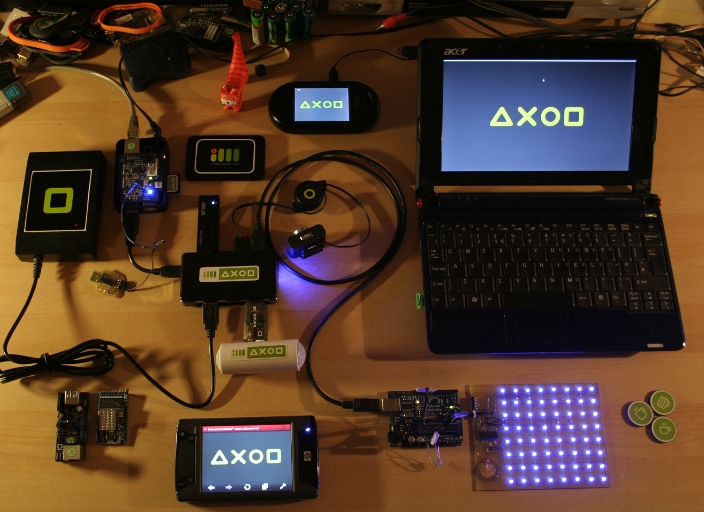
Click below to see project details and tutorials for developers.
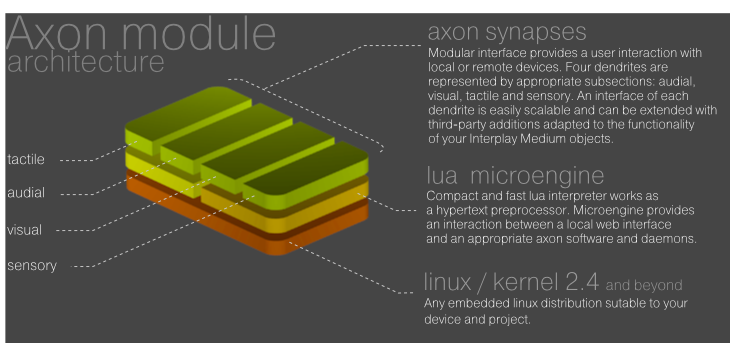
Core implementation
Device have a four synaptic groups:
- audible: in the base configuration is implemented an easy-to-use music player that helps to transform your device into a music center. A user-friendly interface controls the music output (play/stop) and provides the functionality to sort the track list by several parameters, move around subdirectories and add radio stations to the playlists.
- visual: there is a possibility to broadcast streaming video from/to an external local or remote source
- tactile: you able to control the external devices by means of a push-button interface. In the base configuration there is simple arrow keypad provided for command transmission to the external devices and microcontrollers (for example Arduino developing board)
- sensory interface designed for working with external local and remote sensors
All synapses are supplied with the html interface that is viewable in a browser at pocket or stationary device. The device has to have a local network connection provided by your AXOD microserver). This allows you to control your local interactive space directly from your pocket device.
Installation tutorial for the base configuration of the AXOD microserver
For developers and object designers
An AXOD device can be used to control your local interactive space or part of it, as well as work within a cluster of other AXOD devices. As a designer you can use AXOD as a high-level (or mixed-level) external interface to your im-objects. Also you can easily modify and extend the synaptic groups with your own interfaces and easily broaden the functional potential of your AXOD device.
A detailed description of AXOD architecture and functionality